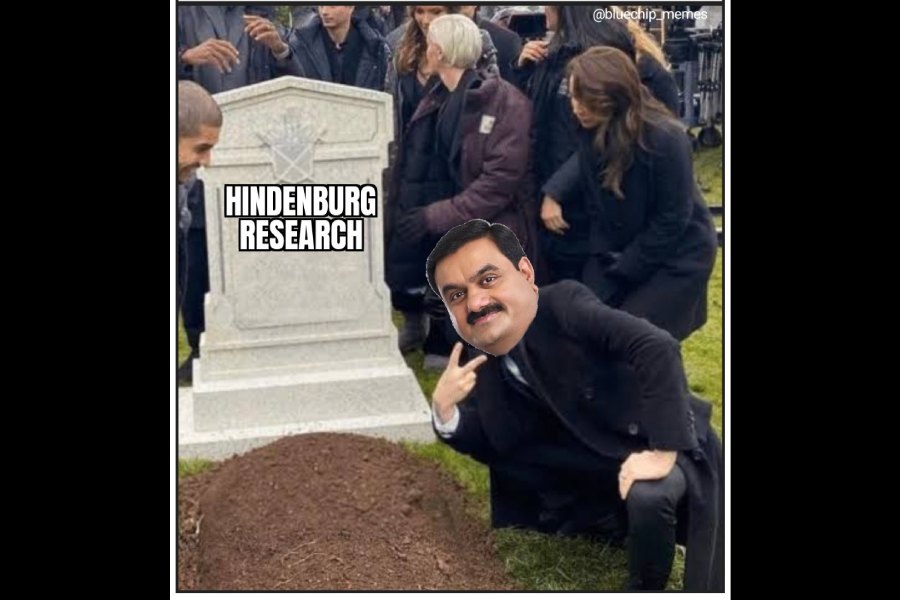 Friday, 17 January 2025
Friday, 17 January 2025
 Friday, 17 January 2025
Friday, 17 January 2025
Never underestimate the power of the written word. The legend goes that Osamu Suzuki, circa 1981, was on a plane when he read a story in India Today magazine about Maruti looking for partners to make automobiles. His instant reaction to his executives back in Japan was:
“We need to be in this race.”
That split-second decision transformed the Suzuki Motor Corporation in no uncertain terms, giving it new clout in the global auto industry. Today, Maruti Suzuki India has a market cap of $46.9 billion and is speeding along the highway far more swiftly than its parent company in Japan, which is half the size and has a market cap of $22.1 billion.
Maruti Suzuki’s share of the total passenger vehicle market has fallen slightly, but it’s still the market giant, accounting for over 40 percent of the cars sold each year.
Suzuki, in 1981, wasn’t a total newcomer to India and was one of a small minority who spotted how it was a ripe mango waiting to be picked. He was already in a partnership with TVS to make two-wheelers and had gotten a taste of the potential, despite the fact that auto sales were still at very low levels at the time.
It’s almost impossible, 40 years after the event, to explain just how Maruti cars transformed India’s roads. The price of the Maruti 800, launched in December 1983, made it affordable for a new class of aspiring buyers. Indian buyers had never seen the quality levels that Maruti offered. It became fashionable even for the richer people in society to wave around their keys proudly and step into their tiny Maruti 800s.
Hormazd Sorabjee, editor of Autocar, says: “Osamu Suzuki, the man who took a punt on India, completely transformed India’s automotive landscape. His legacy of putting an entire subcontinent on wheels, starting with the humble 800, can never be forgotten.”
On a more personal note, columnist Andy Mukherjee reminisced about both Manmohan Singh, who died Thursday, and Suzuki: “Dr Singh taught us Indians how to dream… and we dreamed of owning Osamu Suzuki’s cars – air-conditioned 800s, if we saved enough, and Esteems, someday, if our careers took off.”
Crucially, Suzuki also brought his company’s component suppliers to India, and this meant the vehicles they made quickly turned into entirely Made-in-India products. This not only helped to keep costs low – Osamu Suzuki was legendarily penny-pinching and constantly looking to cut expenses. It also fostered a new tribe of businessmen who grew into auto parts industry magnates.
Suzuki's pint-sized, no-nonsense vehicles sold well because they were fuel-efficient and affordable. In places where gas could cost more than $4 per gallon and per capita income was measured in hundreds of dollars instead of thousands, Suzuki cars ruled.
Looking back, with the benefit of hindsight, Suzuki’s gamble on the Indian market looks like a smart bet destined to pay off. But this outcome was largely thanks to India’s economy booming and the burgeoning Indian middle class. Also, it’s worth noting that while Suzuki began reaping rich profits from India, the rest of the global auto industry was still cautious and kept their feet firmly on the brake.
"If I were to listen to everybody, it would make things too slow,” Suzuki said of his leadership philosophy. "Never stop, or else you lose.” Suzuki’s more than 28 years as president across two terms made him the longest-serving head of a global automaker.
It would take over a decade for global auto giants to start muscling into the Indian market. By then, Suzuki had already secured the fast lane and was far out in front. Maruti Suzuki Chairman R.C. Bhargava says: “Without his vision and foresight, his willingness to take a risk that no one else was willing to take, his deep and abiding love for India, and his immense capabilities as a teacher, I believe the Indian automobile industry could not have become the powerhouse that it has become. Millions of us in this country are living better lives because of Osamu San.”
Suzuki kept in close touch with the Indian political world and even with India’s ambassadors in Tokyo.
To understand the risks Suzuki took, one only has to look across the border at Pakistan. Around the same time Suzuki launched production in India, he also made a smaller bet on the Pakistani market.
Suzuki has the largest chunk of the vehicles making their debut on Pakistan roads annually. But Pakistan’s economy has collapsed, and last year, to save on foreign exchange, the country’s central bank stopped releasing foreign exchange to automobile manufacturers (and other industries also).
The result: production crashed because manufacturers couldn’t bring in essential components and CKD (completely knocked-down) kits and therefore had to resort to what were unambiguously called ‘non-production days.’
Another major factor was the plummeting Pakistani rupee – one Indian rupee is now worth about PKR 3.2. Combined with steep inflation, this means that a car costing Rs 10 lakh in India could cost three to four times that in Pakistan rupees.
Unsurprisingly, sales have nosedived. November 2023 was the industry’s cruellest month when it hit rock bottom, with total sales across all manufacturers amounting to just 4,823 units. While 2024 has seen some recovery, Pakistan’s auto industry remains in critical condition and is not out of the ICU.
Pakistan Suzuki is now considering delisting and going private.
Suzuki kept a close eye on the company’s Indian operations throughout his life. He was in India as recently as July for R.C. Bhargava’s 90th birthday.
On Friday, Bhargava showered him with praise, saying: “I have lost someone closer than a brother to me. He changed my life and showed me how nationality is no barrier to people building unbreakable bonds of trust in each other. He was my teacher, mentor, and a person who stood by me even in my darkest days.”
Born in 1930, Osamu Suzuki married into the family of the founder of the company. With no male heirs in sight, Osamu Suzuki, once Osamu Matsuda, took his wife's name, as is Japanese custom in this situation.
The company had started by manufacturing pedal-operated looms. In 1955, the company began producing cars, but they were far behind giants like Toyota and Honda. Osamu Suzuki realized that the company had to be bold and innovative if it wanted to avoid being pushed out.
He worked his way through the company but stayed president and chief executive officer for 22 years. One assessment notes that “he turned Suzuki into a global powerhouse by producing rugged, low-cost minicars for the less wealthy but more populated areas of the world, such as India, China, and Eastern Europe.”
In November, the company announced that it had exported more than 4 million cars from India. Most of these were sold in Latin America, Africa, and Eastern Europe.
Maruti Suzuki faces a new challenge with the emergence of electric vehicles. It has teamed up with Toyota, which was keen on using the smaller company’s skills at producing compact vehicles.
Suzuki, for its part, needs Toyota’s electric technology. Suzuki will start producing Toyota’s EVs in Gujarat next year.







